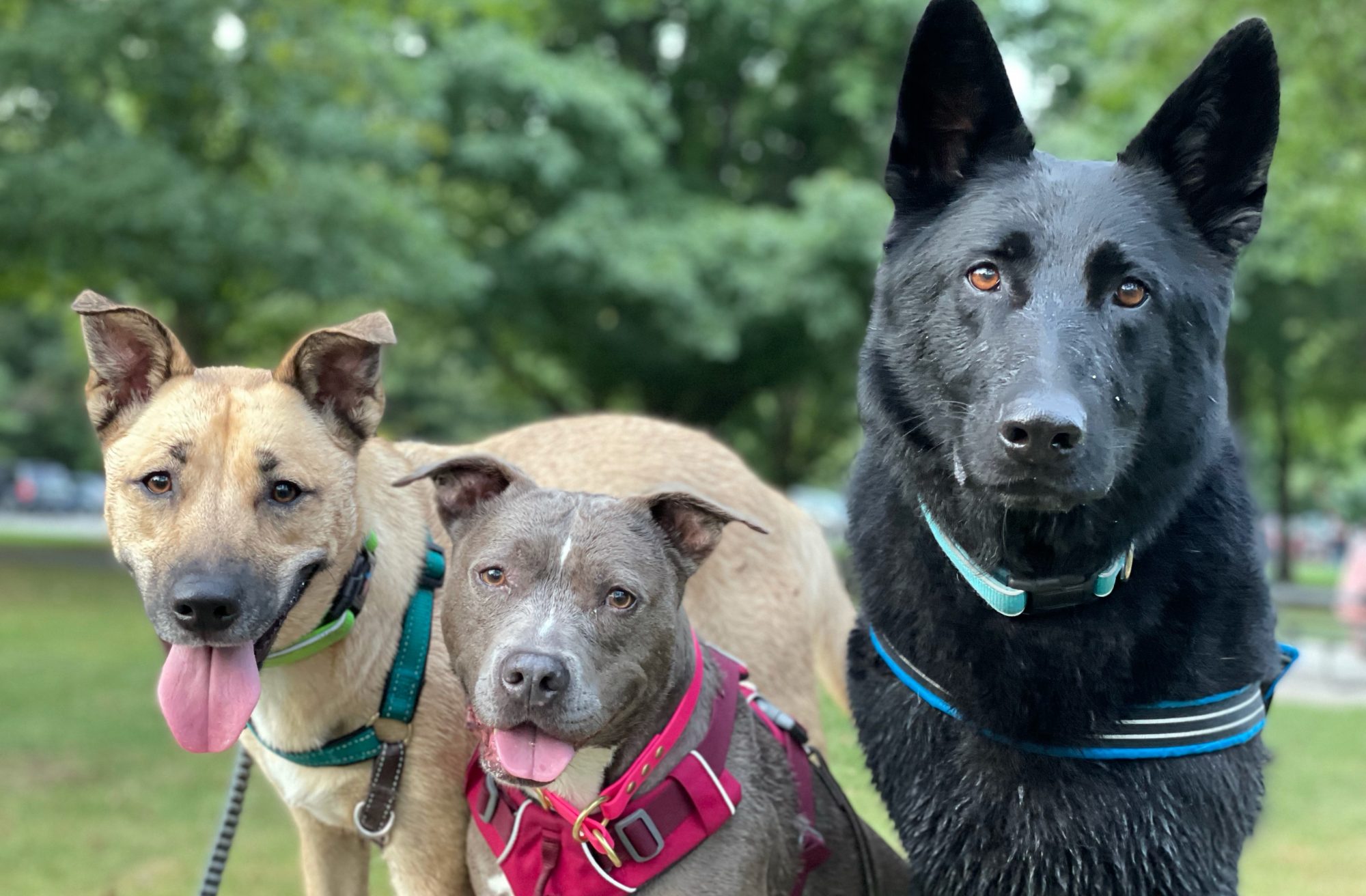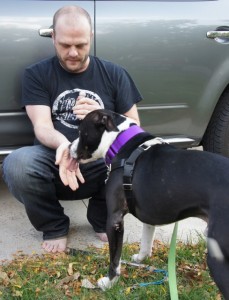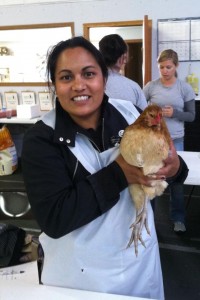 On August 30th, 2012 the book WALLACE was released and stocked on store shelves all around the country. I had pre-ordered my copy in advance and was very excited when it arrived on my door-step the day following it’s release. I curled up and cracked open the smooth, glossy book cover. Within 48 hours, I finished the book and sat back with a smile, and tears in my eyes.
On August 30th, 2012 the book WALLACE was released and stocked on store shelves all around the country. I had pre-ordered my copy in advance and was very excited when it arrived on my door-step the day following it’s release. I curled up and cracked open the smooth, glossy book cover. Within 48 hours, I finished the book and sat back with a smile, and tears in my eyes.
Wallace’s story written by Jim Gorant, author of Lost Dogs, which told the tragic and heroic story of the Bad Newz Kennel’s dogs previously owned, abused, and exploited by NFL player Michael Vick. During the writing of Lost Dogs, Jim met the Yori’s, who adopted one of the “Victory” dogs, Hector. Hector was not the first pit bull owned by the Yori’s. Clara and Roo had saved the life of Wallace, a troubled Pitty who’s chances of survival were dim if they hadn’t stepped in, along with the help of a few other dedicated dog people to campaign and fight for Wallace.
This story covers Wallace’s life from his first few weeks of life to his time at a shelter—where his life was in limbo—to his rise as a multiple World Champion Disc Dog, once he was given a chance to prove himself and given the proper outlets to do so.
I am passionate about Wallace’s story for multiple reasons. As a pit bull advocate and pibble “parent” myself, I understand the unjust negativity toward owning pit bulls and the obstacles we face every day just because our dogs look a certain way. This story also resonates with us Minnesotans since Wallace is a Rochester, MN resisdent and local hero. It’s also a great story about an individual who faces adversity and has the odds stacked against him, given the breed he is and being in a sport that is normally dominated by agile, fast, furry, small Border Collies and Aussies. Wallace also puts a face to many shelter dogs who don’t make it out of the system alive because of their looks or their drive. Wallace is a Pit Bull—even though Pit Bull isn’t a recognized breed, it’s a generic term given to blocky headed, short-coated dogs.
Pit Bulls have been on the chopping block for several years now, mainly due to the rise of their popularity among people who shouldn’t have dogs to begin with. As a result, pit bulls started to be associated with a group of people that meant trouble. These people raised this sweet, loyal breed to do their bidding and, as a result, dogs with poor temperaments were bred and raised. Although most pitties will rebound and do amazingly well if given another chance at a better life, the general public learned to fear dogs labeled as Pit Bulls. This can be partially attributed to the media, which loves a good fear-factor story, since fear sells. Any time a blocky-headed, short-coated dog did something negative, the media ran with it, often times making national news. They almost always labeled the dogs as Pit Bulls and demonized them as vicious and killers. In many cases, dogs fitting a certain image weren’t given a fair chance. If they entered shelters or were seized during raids, the dogs were automatically euthanized—killed—just based on their looks. Finally, a few years ago, we started to see a change as more and more national organizations like the ASPCA started to campaign for the dogs and say, “Hey, let’s treat these dogs as individuals and assess them as such.”
Wallace’s story is a perfect example of what many shelter workers and pet owners experience when dealing with these intelligent, loyal, athletic, and sweet dogs. It’s also a great example of the subtle changes that are bringing back the original reputation and image of the Pit Bull as an All-American Heroic icon, a trustworthy canine, and a family member.
As an update, Wallace has been suffering from health ailments lately and just last night had to go into emergency surgery. As a result, the Yori family has been hit hard with medical bills; doubly so since one of their other furry family members, Angus, just suffered from a cruciate ligament tear as well. If you’d like to help this family, please consider purchasing the book WALLACE today! I couldn’t put it down, and I’m guessing for those who pick it up, they won’t be able to stop reading it either.
Purchase WALLACE at your favorite bookstore or from the following sites:
–Amazon
–Barnes & Noble
–Indiebound
–iTunes
–Books A Million
You can also find Wallace the Pit Bull on Facebook
Added on Sept 19th, taken from another post by Clara Yori
A few people have asked how they can help or contribute to Wallace’s care. At this point, we are not in a position to turn people down. On the same day that Wallace had emergency surgery to remove his splenic mass, his best friend Angus tore his cruciate ligament. Now the diagnosis is confirmed that Wallace has hemangiosarcoma, an aggressive cancer. We are researching our options and currently have appointments set up with an oncologist and a holistic veterinarian for Wallace. Angus is scheduled for TPLO surgery at the animal hospital on Monday 9/17. The outpouring of love and support has been overwhelming. We can’t express our gratitude enough. We can assure everyone that we will make decisions based on his best interest. We want quality AND quantity. Here are some ways that people can help.
1. ChipIn. So far the vet bills total almost $6000. If we can get help with even a portion of that we would feel so grateful. ChipIn For Wallace and Angus
2. Buy Wallace’s book. Wallace: The Underdog Who Conquered a Sport, Saved a Marriage, and Championed Pit Bulls– One Flying Disc at a Time Make sure your local bookstores and libraries have it. Read our story. Share it with others. Wallace has made a positive impact on this world and he has more to do.
3. Help a homeless pet. Donate to your favorite shelter or rescue in Wallace’s name, volunteer your time, adopt – Petfinder is a great resource. Then tell us about it. Knowing that something good is being done in tribute to Wallace makes us feel happy.
4. Send stuffies or treats. Wallace loves to destroy stuffed toys, with or without squeakers (they will be destroyed immediately so don’t bother purchasing expensive ones). Treats must be grain-free and poultry-free. Good brands for him are ZiwiPeak, Raw Bistro Stix,Wellness Pure Rewards (venison/salmon), Pure Vita (beef liver/sweet potato). No chews except for Zukes Z-Bones (he hardly has any teeth left). You can send them to him at 4712 19th St SE, Rochester, MN 55904.
5. Continue to send him positivity and love. Say prayers, wish him healing light, reiki, good thoughts… I believe all of that good energy is good for him.
6. I (Clara) am currently doing a painting of Wallace and I will be selling prints online to help with his medical bills. Those should be ready next week if you are interested.
7. Hug your pets and be glad for every moment you have with them. Their lives are too short and they deserve every ounce of goodness possible.

This is Wallace on his 10th birthday this year. He knows how to live life to the fullest and we want to help him do that for as long as he wants to.


















